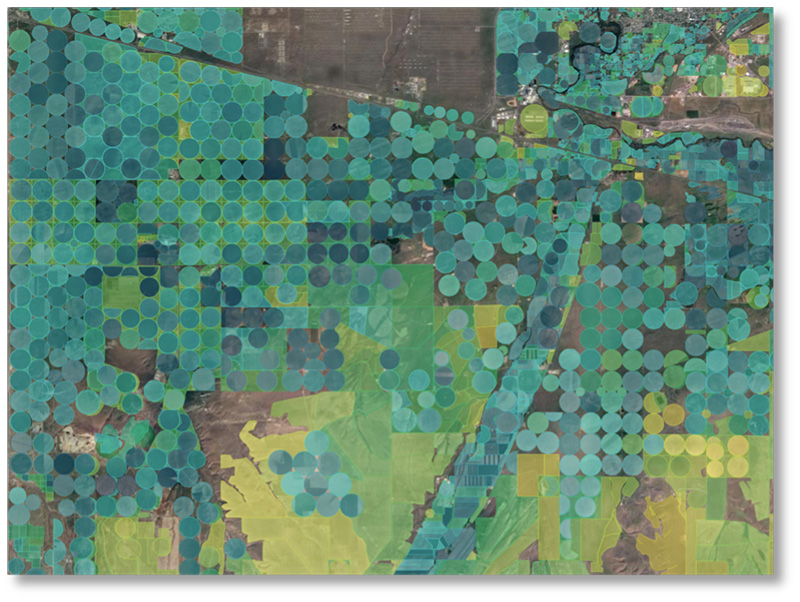Crop Evapotranspiration, Consumptive Use, and Open Water Evaporation for Oregon
Project Description
The quantification of evapotranspiration (ET) from irrigated lands and evaporation from open water bodies is necessary for determining basin water budgets, consumptive water use, and supporting water management and planning activities. This study provides a long-term record of monthly and annual satellite-based actual crop ET and consumptive use of irrigation water, potential crop ET and irrigation water requirements, applied irrigation water, and open water evaporation estimates for all major water bodies within the Oregon hydrographic area. Crop ET and open water evaporation estimates were developed for the period of 1985-2022 and 1980-2021, respectively, using a combination of agricultural field boundaries, gridded weather data, satellite data, and application of crop-soil-water balance and open water evaporation models.
The ET products developed in this study—actual crop ET, potential crop ET, consumptive use of irrigation water, applied water, and partitioning of surface water and groundwater—are summarized at monthly and annual time steps for over 250,000 individual agricultural fields. Field-level results are summarized by hydrologic unit code (HUC) 8 and 12 scales, and open water evaporation estimates are summarized for over 80 water bodies within the Oregon hydrologic area. A field-level geodatabase was developed that contains over 37 variables and attributes, and the HUC watershed database includes 50 variables and attributes.
The results and data summaries produced in this study are presented through the development and discussion of geospatial databases, maps and time series figures, tables, and comparisons to previous studies and estimated irrigation water requirements. The results and summaries from this study are intended to be used to support water budget and water resource assessments, surface water and groundwater modeling efforts, and water management and water planning activities.

REPORT. Crop Evapotranspiration, Consumptive Use, and Open Water Evaporation for Oregon
APPENDIX 1. Field boundary geodatabase attribute and variable list of names and descriptions
APPENDIX 2. Watershed geodatabase attribute and variable list of names and descriptions
APPENDIX 3. Weather stations used for gridMET ETo bias correction, period of record, and mean annual station to gridMET ETo
APPENDIX 4. Summary table of CDL crop codes and ET Demands crop type pairings
APPENDIX 5. Open water body list and metadata used to estimate open water evaporation
APPENDIX 6a. Field and HUC geodatabases.
APPENDIX 6b. HUC-8 ETa and CUirr map figues.
APPENDIX 6c. ET Demands input, output, and GIS data.
APPENDIX 7. Annual time series figures of volumes and area-weighted rates of consumptive use of irrigation water CUirr and AW for HUC-8s
APPENDIX 8. Comparison maps, charts, and data tables between ET Demands ETc and NIWR with reported values from Cuenca (1990)
APPENDIX 9. Eddy covariance station and OpenET ensemble comparisons
APPENDIX 10. Open water evaporation model input and output data and statistics based on DLEM (a) and CRLE (b) models, and associated GIS data (c)
CONTACT
Justin Huntington, Ph.D.
Justin.Huntington@dri.edu
Blake Minor, MS
Blake.Minor@dri.edu
Matthew Bromley, MS
Matthew.Bromley@dri.edu
LOCATION
Desert Research Institute
2215 Raggio Parkway
Reno, NV 89512
DIVISION
Hydrologic Sciences